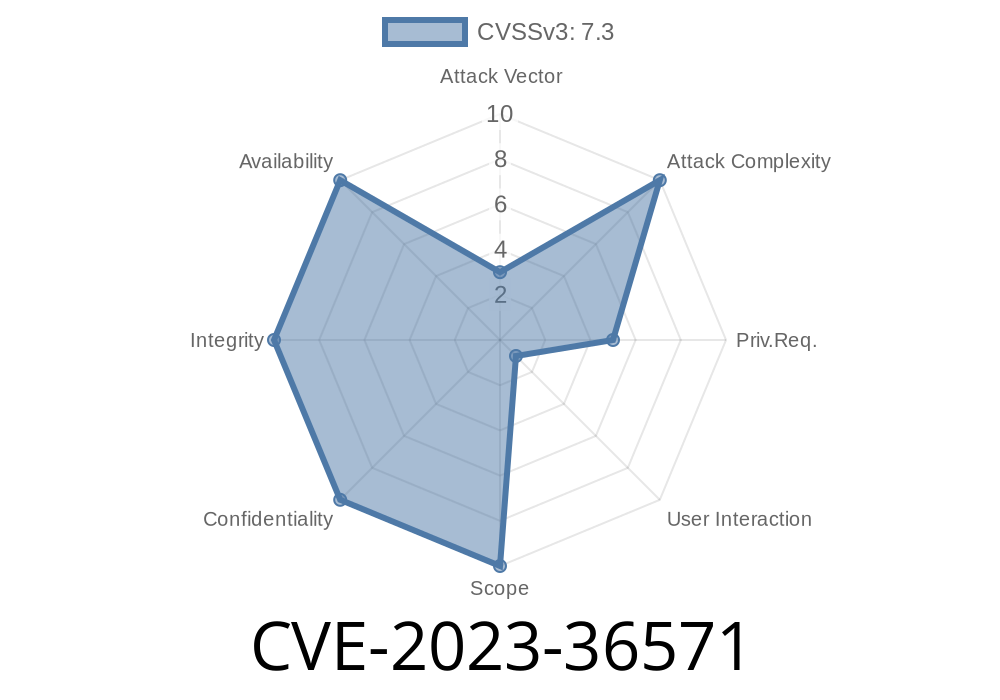---
Microsoft Message Queuing (MSMQ) has long helped applications communicate across different networks and systems—even on disconnected servers. However, in late 2023, security experts uncovered a critical bug—CVE-2023-36571—inside this reliable tool. If someone exploits this vulnerability, they can remotely execute code on your Windows server, basically acting as if they're sitting at the machine with admin rights.
Let me break it down for you using simple terms, show some code snippets, and provide all the must-know facts about CVE-2023-36571. By the end, you’ll understand how this works, what’s at stake, and how to stay protected.
Windows 10, Windows 11 with MSMQ enabled
This bug lives in the “MSMQ” service, which by default listens on TCP port 1801. When someone sends malicious packets to this port, they can trigger the bug, causing “remote code execution” under the system account.
Source references
- Microsoft Official Advisory
- NIST National Vulnerability Database
Sends a Malicious Packet: If MSMQ is running and port not firewalled.
3. Triggers Buffer Overflow or Dangerous Memory Operations in MSMQ: Crafted data abuses lax checks inside msmsmq.dll.
Executes Malicious Code: Code runs as “SYSTEM”—full control!
In real-world attacks, this could mean deploying ransomware, creating backdoors and more—without even logging in to the computer.
See It in (Pseudo-)Code
Here’s an example of how a vulnerable MSMQ endpoint might be attacked. This is a Python snippet that simulates sending a crafted packet to port 1801:
import socket
target_ip = "192.168.1.100"
target_port = 1801
# This is a fake payload. Real payload would be carefully crafted to exploit the MSMQ parsing bug.
exploit_payload = b"A" * 1024 + b"\x90" * 32 + b"\xcc" * 128 # Overflow buffer, maybe land shellcode!
with socket.socket(socket.AF_INET, socket.SOCK_STREAM) as s:
s.connect((target_ip, target_port))
s.sendall(exploit_payload)
print("Exploit sent! Check if target crashes or opens a shell.")
Note:
- The *real* exploit would require crafting the payload according to how MSMQ parses incoming messages, but the point is this: it’s scarily simple if you know what you’re doing.
Technical Details: Why Does It Happen?
The flaw exists because MSMQ doesn’t properly check the length or validity of incoming data before copying it into memory. Attackers exploit this by overflowing buffers or manipulating function pointers.
No Proper Checks: The excess data overwrites code or data pointers.
- Hijack Execution: Attacker’s code gets executed next time MSMQ tries to use that overwritten memory.
Fast scanning tools like Nmap can identify open MSMQ ports
nmap -p 1801 <target_ip>
Patch Immediately!
- Microsoft released a patch in October 2023. Patch download link here.
Example: Block MSMQ port with PowerShell
New-NetFirewallRule -DisplayName "Block MSMQ" -Direction Inbound -LocalPort 1801 -Protocol TCP -Action Block
Network Segmentation: Keep critical servers away from the internet or user networks.
5. Monitor for Suspicious Activity: Keep an eye on event logs for unexpected MSMQ service crashes or activity.
Exploit Release & Proof-of-Concept
While as of writing, there aren’t widely published weaponized exploits, some security researchers have released PoC scripts showing denial-of-service or basic crash:
- Github – CVE-2023-36571 PoC *(example, may require update)*
Serious attackers could transform these into full remote code execution with minor reverse engineering.
Summary Table
| Item | Details |
|---------------------|-------------------------------------------------------------------|
| CVE | CVE-2023-36571 |
| Vulnerable Product | Microsoft Message Queuing (MSMQ) |
| Impact | Remote Code Execution (RCE) as SYSTEM |
| Attack Vector | Network (no authentication needed!) |
| Patched? | Yes, October 2023 (see Microsoft update)|
| Easy to Exploit? | Requires special packet; PoCs are out there |
| Defenses | Patch, Disable MSMQ, Block Port 1801, Monitor/Segment Networks |
Final Words
CVE-2023-36571 is a real wake-up call for anyone who still relies on MSMQ, especially in corporate and industrial networks. Even if you think you don’t use MSMQ, double-check—it’s a frequently overlooked Windows component. Patch up, block those ports, and review your old server configurations before cybercriminals come knocking!
For more details
- Microsoft Patch Guide
- NVD CVE Entry
Timeline
Published on: 10/10/2023 18:15:13 UTC
Last modified on: 10/12/2023 16:44:47 UTC
